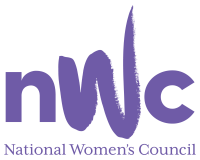Where are women’s voices in Current Affairs Radio?
Published: Tuesday, November 10, 2015
Why are the majority of experts and guests on radio male? And why are women allocated shorter air time than their male counterparts?
These questions and more are addressed in “Hearing Women’s Voices?” a study which explored women’s underrepresentation in current affairs radio programming across national stations at peak listening times in Ireland, results of which will be launched this Tuesday 10th of November. The study by the National Women’s Council of Ireland and Dublin City University was funded by the Broadcasting Authority of Ireland (BAI) through its Media Research Funding Scheme.
Study Highlights
• The study which took place across three weeks in the second half of 2014 revealed that the overall breakdown of voices was 28% female and 72% male voices across the three radio stations examined breaking down to 63% on RTE Radio, 82% on Newstalk and 70% on Today FM.
• Women also tended to get shorter air time when on and the majority of guests and experts were male across all stations.
• Male voices take up 72% of news and current affairs radio broadcasting time (broken down across the three stations as follows: 63% on RTÉ Radio 1, 82% Newstalk and 70% Today FM). On RTÉ Radio 1 there was an even breakdown of male and female presenters during the week. Newstalk on the other hand has 100% male lead presenters, while Today FM had one male and one female lead presenter on the two programmes monitored. The majority of guests (67%-73%) and experts (79%-85%) were male across all stations.
• The most balanced weekday show (excluding consideration of in-house voices are) Today With Sean O’Rourke (RTÉ Radio 1) with 59% male voices followed by Morning Ireland (RTÉ Radio 1) with 67% male voices. The least gender balanced weekday shows were The Right Hook on Newstalk with 81% male voices and Newstalk Breakfast with 86% male voices.
• Males made-up 75- 80% of news subjects on RTÉ Radio, while male voices also dominated discussions of a range of topics including politics (70% male on RTÉ Radio1), economics (76% male RTÉ Radio 1 and 83% Newstalk), sports (75% male on RTÉ Radio 1 and 95% male on Newstalk). In relation to heath topics there was a clear differentiation between stations with just 42% of voices discussing health on RTÉ being male compared with 66% on Newstalk and 70% on Today FM.
Orla O’Connor, Director of the National Women’s Council of Ireland (NWCI) said that the report shows “that there is significant room for improvement and all radio stations have work to do to achieve a minimum target of 30% female experts and ideally a 40:60 gender balance among guests and experts. NWCI appreciates that companies and organisations generally put their most senior people on as spokespersons and in Ireland they tend to be male, however this report outlines a number of recommendations on how we can achieve a better gender balance for the future by working together.”
Dr Jane Suiter, Dublin City University and Co Author of the report said “All the stations have made progress since the first examinations of female voices were conducted. However, there is still significant scope to hear more female reporters on air on all stations, especially to have some female lead presenters during the week on both Newstalk and Today FM. In terms of guests all stations have also made progress but attention could be paid to ensuring that a diverse range of voices are both interviewed and the subject of news reports.”
Michael O’Keeffe, Chief Executive of the BAI said “The BAI is pleased to have funded this research through its Media Research Funding Scheme. The Scheme is a valuable initiative that provides the BAI and the industry with informed and timely research about the opportunities and challenges that the broadcasting industry faces.
“This report is very timely and we look forward to reviewing the various recommendations, with a view to considering ways in which they might be given practical effect in the context of our work-plan for 2016 and as we move toward the development of a new strategy for 2017-2020.”
An Overview of the Research Methodology
A number of strategies were used to explore this under-representation as follows.
• A review of the national and international literature
• Monitoring of women’s voices on news and current affair programmes at peak times on three radio stations in Ireland
• Observation of production practices across two current affairs radio programmes
• Interviews with key stakeholders (at both programme and station
• Management level)
This monitoring took place across three weeks in 2014:
30 June to 4 July; 31 August to 6 September and 14 to 20 September.
The three weeks were separated by a number of weeks in order to average out differences that a particular news story could have on an individual week. See Table 1.1 for details of the 15 (Seven RTÉ Radio 1 programmes, six Newstalk programmes and two Today FM programmes) radio programmes monitored across the three radio stations. Women continue to be underrepresented across news and current affairs programmes across all the stations monitored.
Ends/
